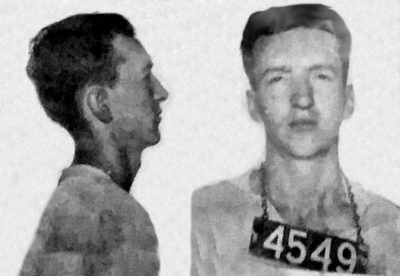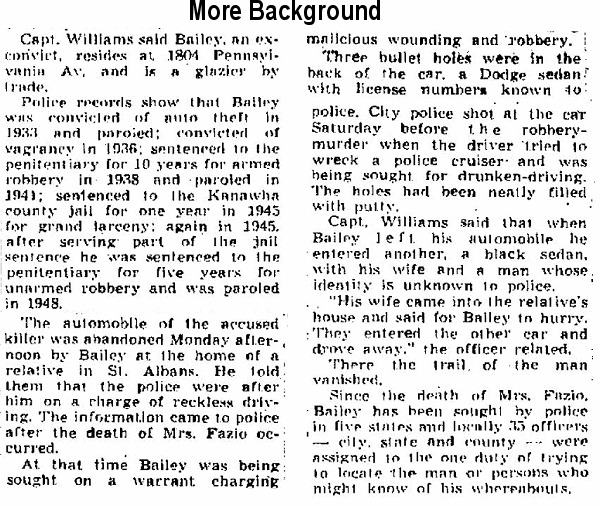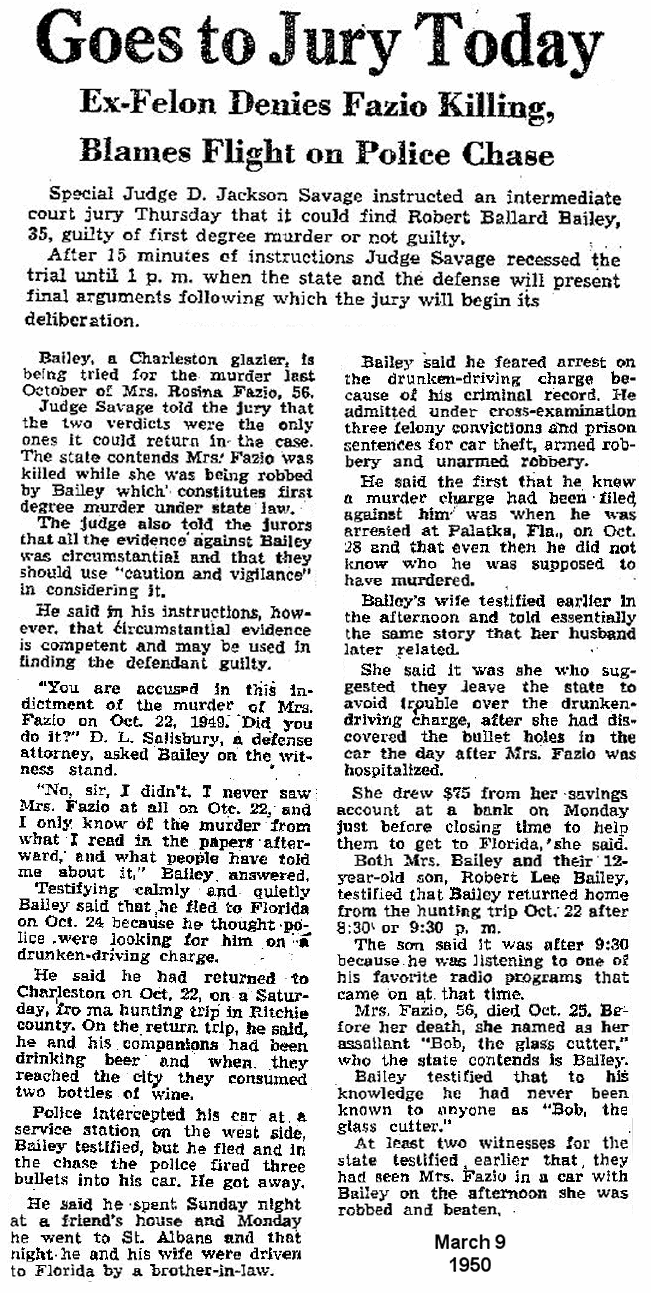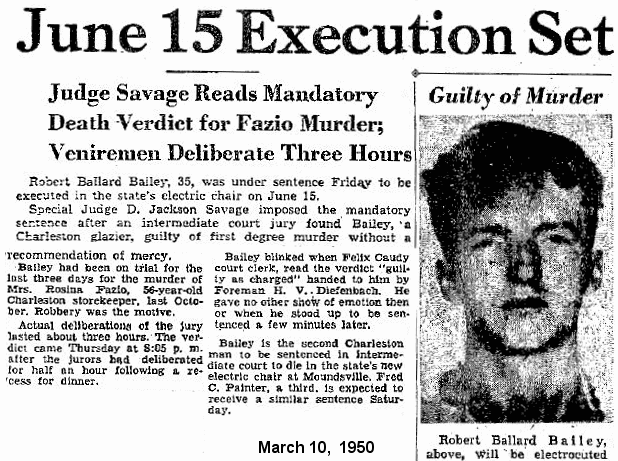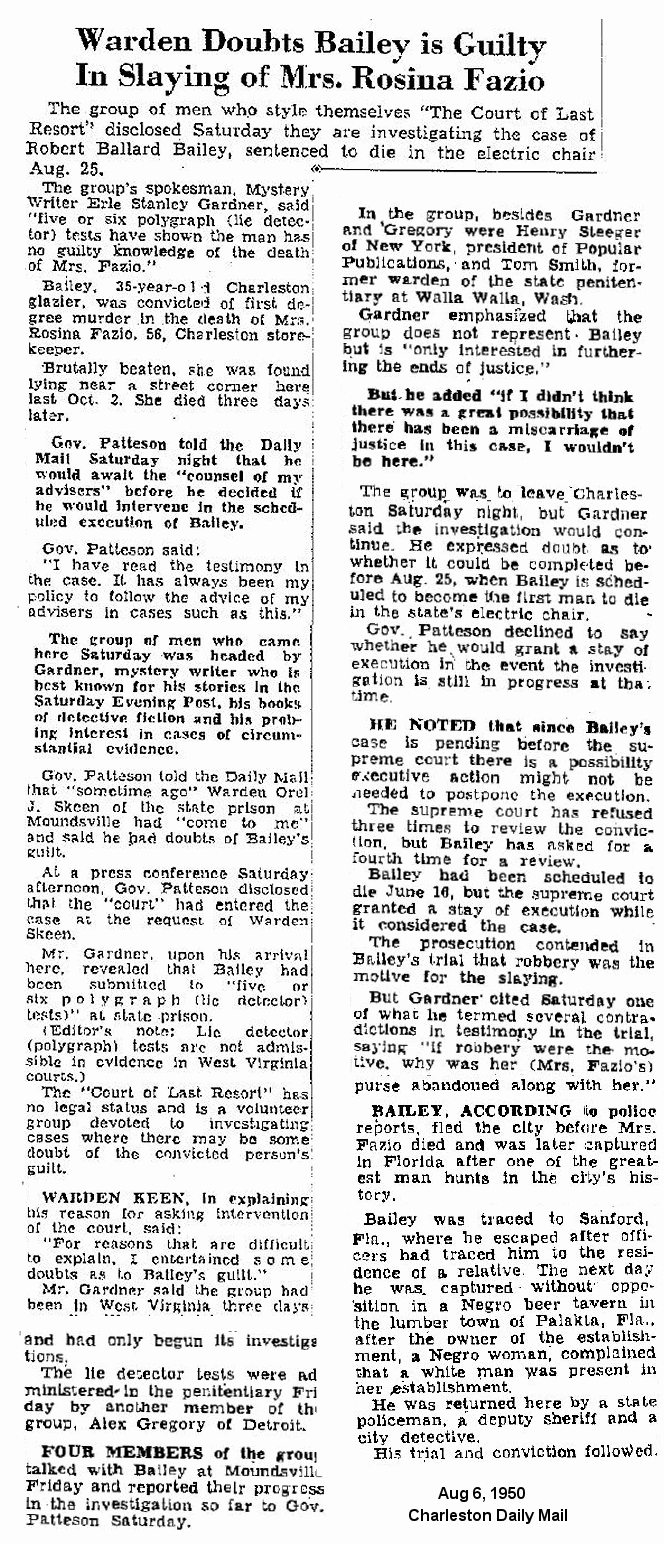The Fazio Murder A thumbnail sketch of a travesty of justice.
Some of the Fazio family: Joe, brother Frank, father Dominic,
and mother Rosina, who was brutally murdered in 1949.
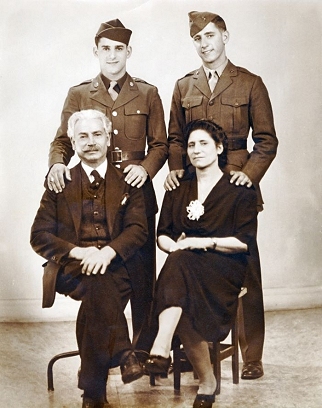
|
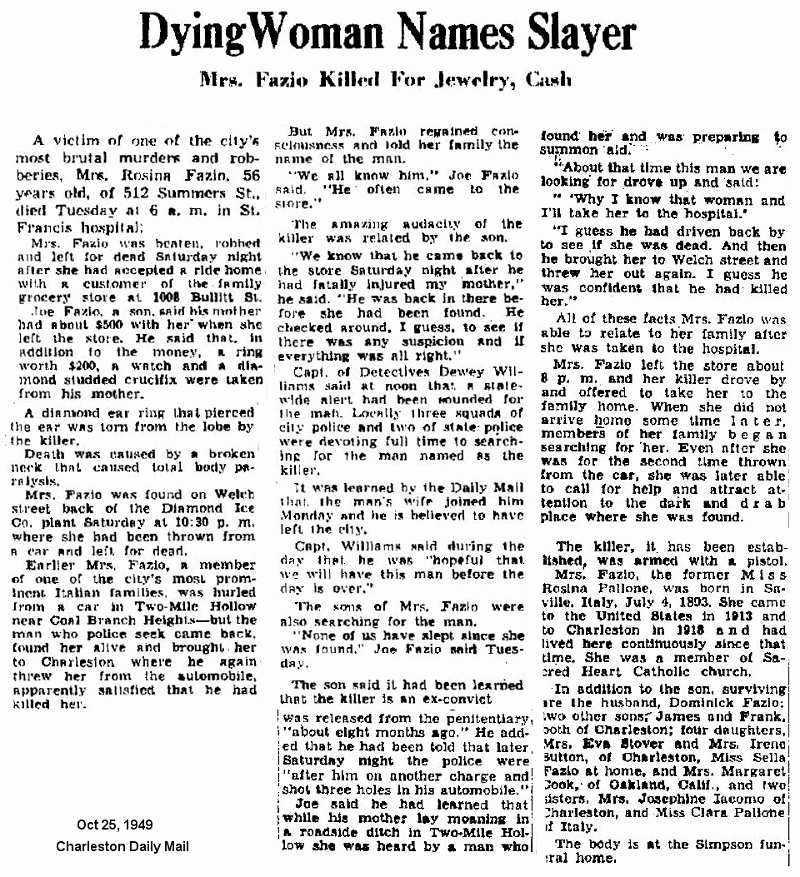
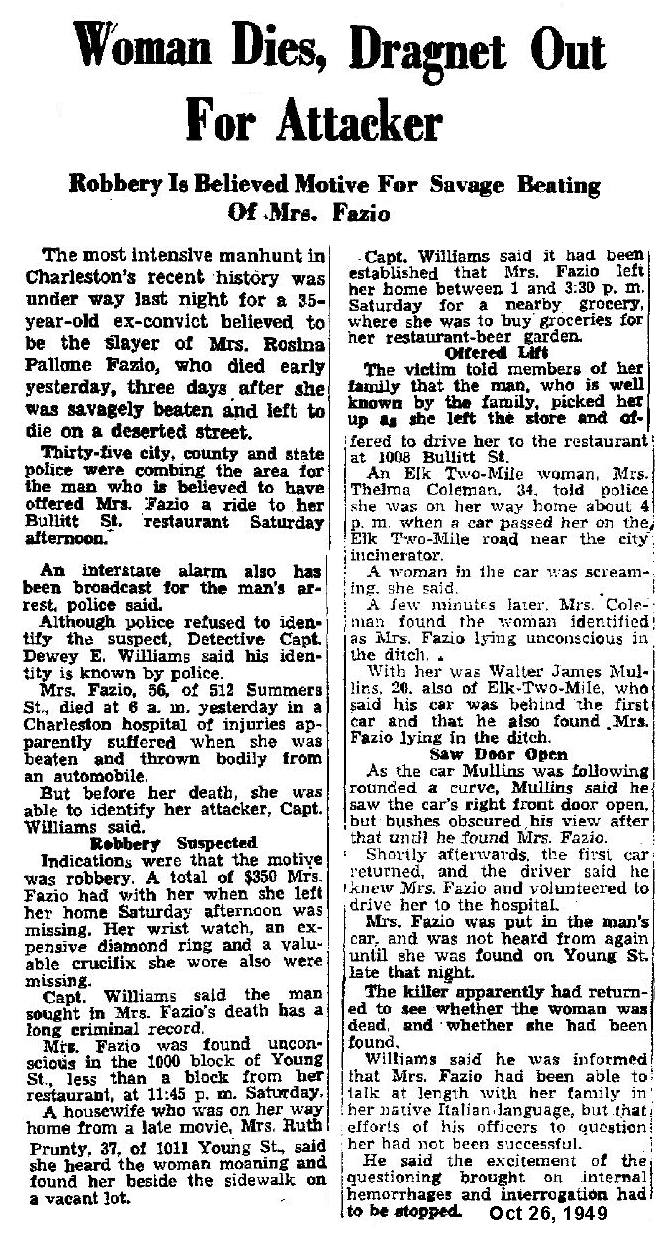
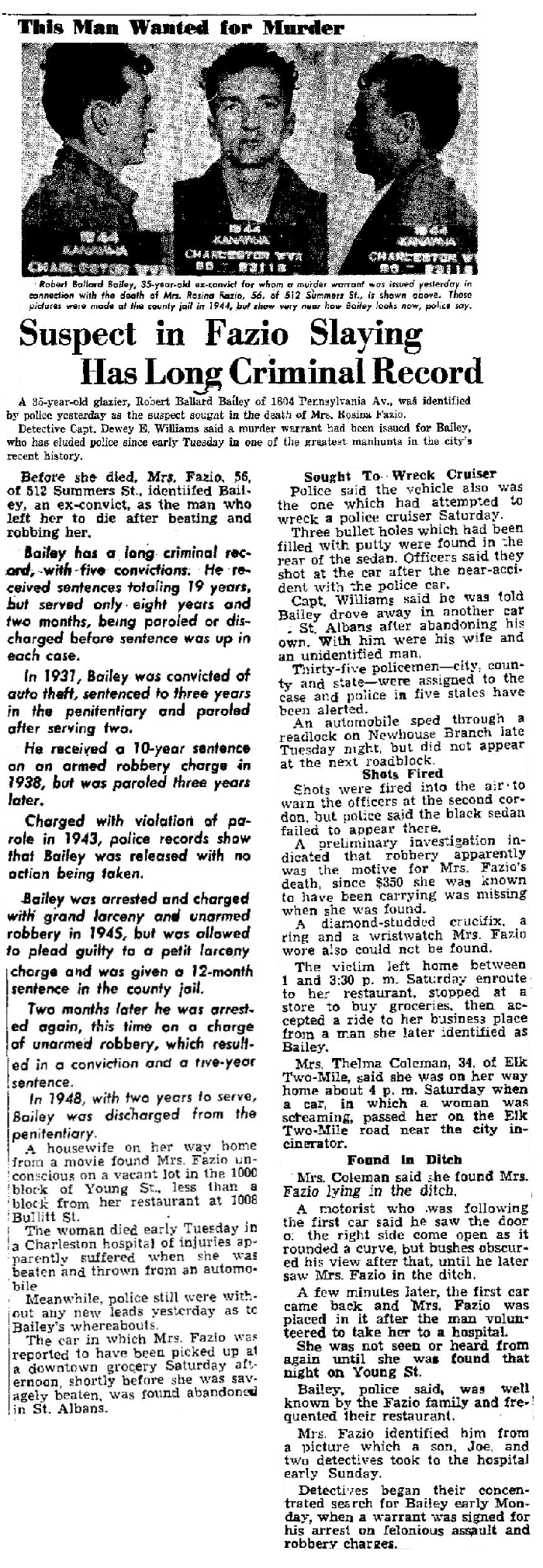
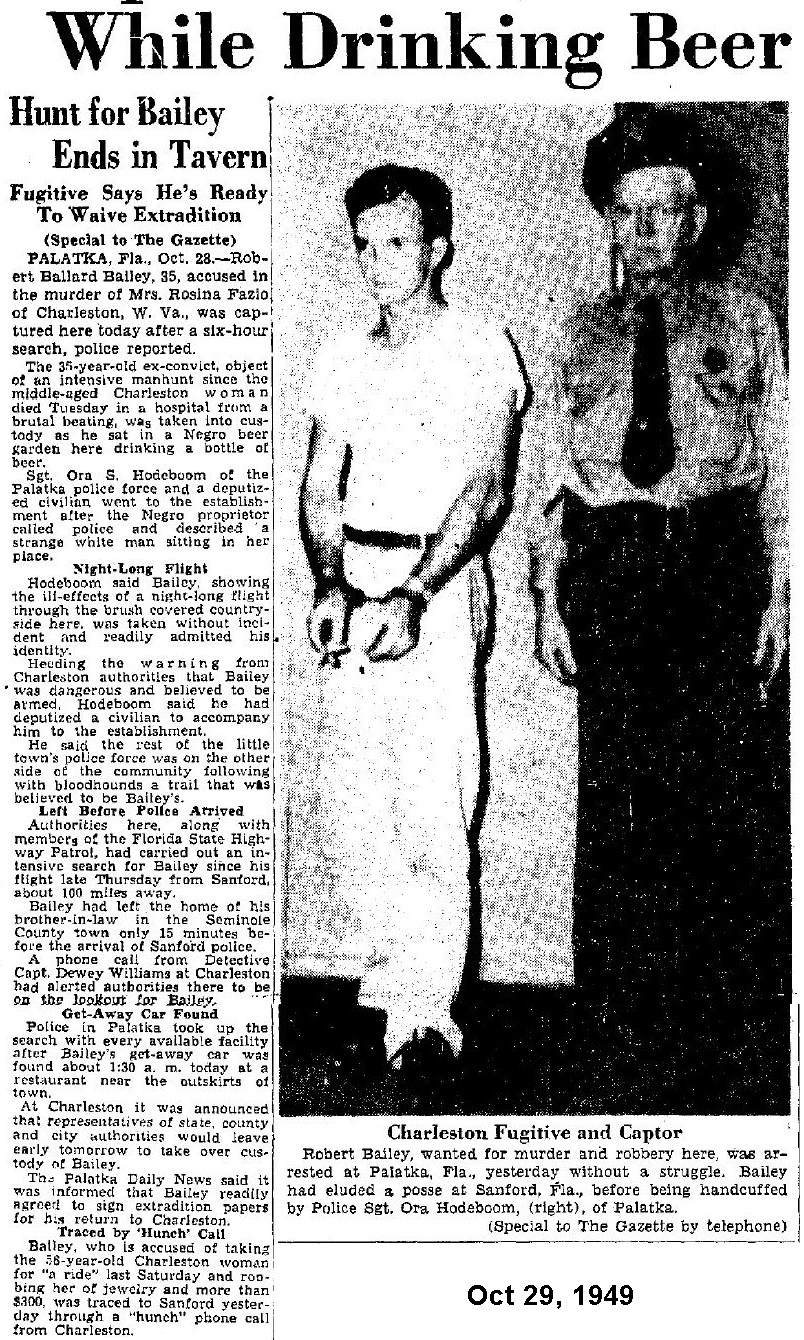 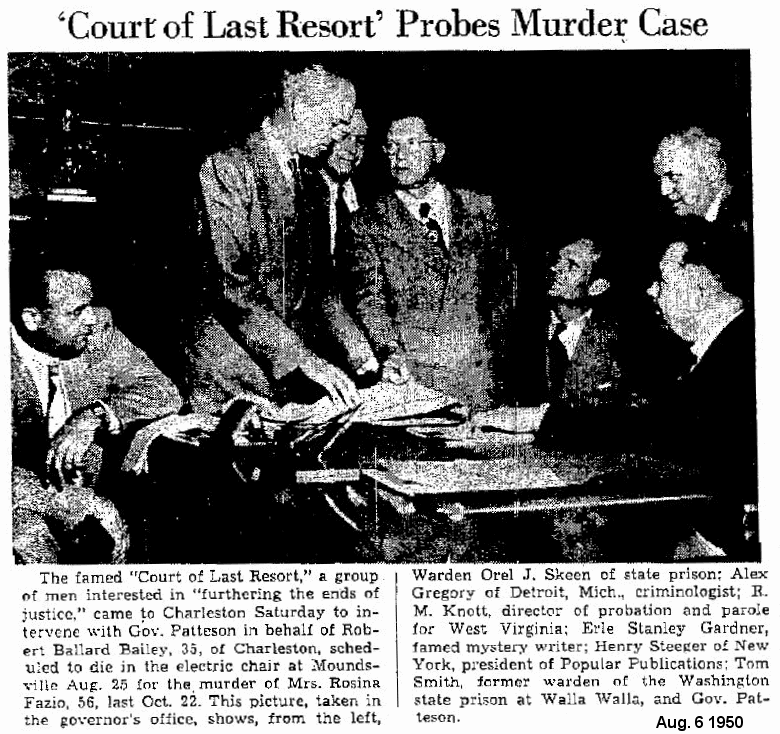
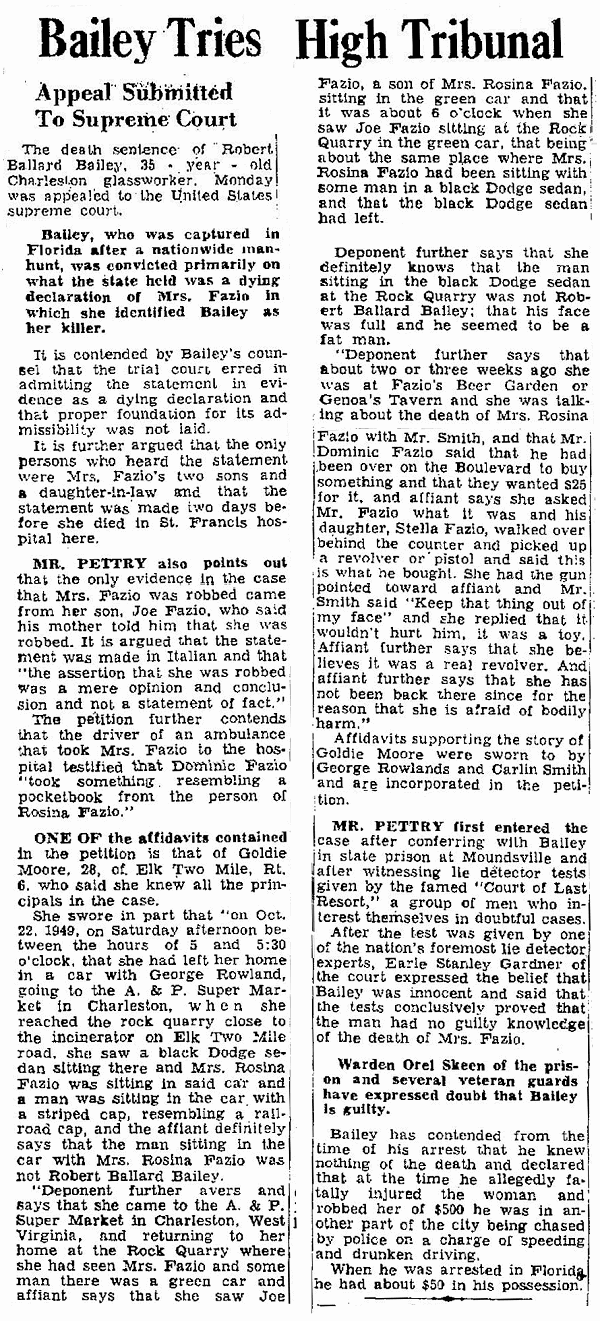
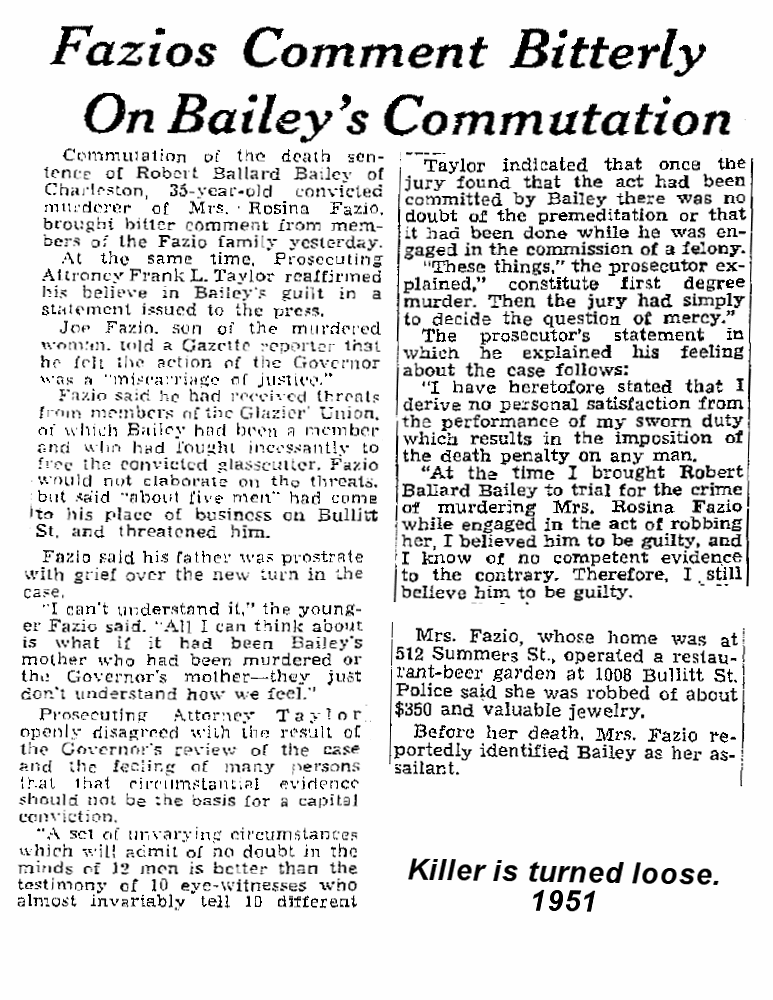
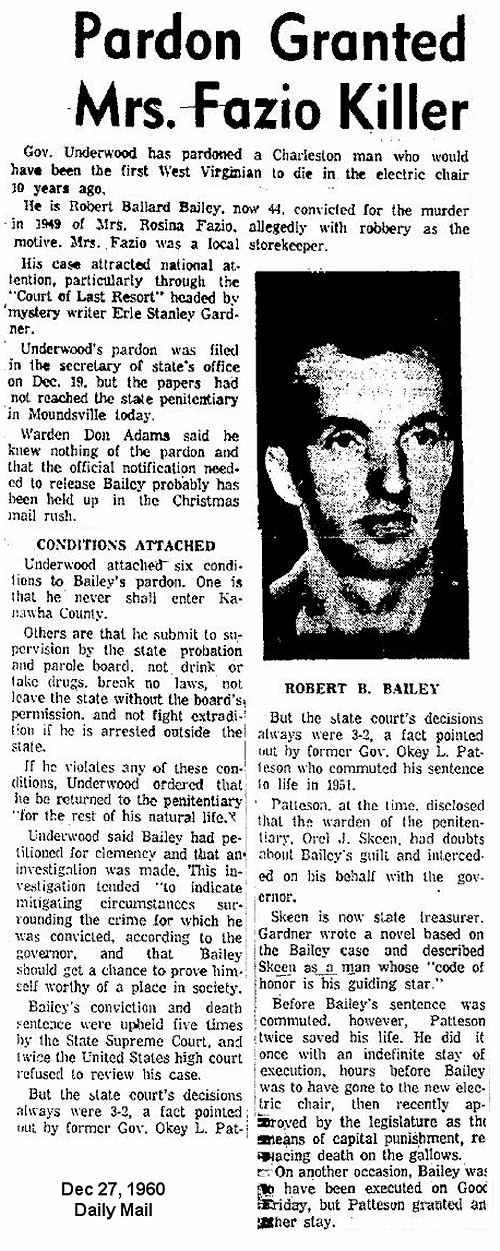
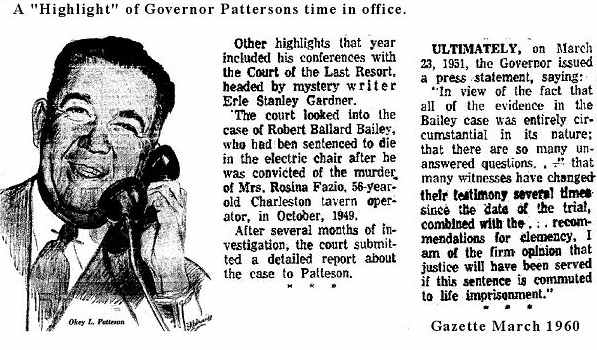
EXONERATION
On
the afternoon of October 22, 1949, 56-year-old Rosina Fazio, a tavern
keeper in Charleston, West Virginia, was picked up by a motorist in a
car. According to a witness who knew Fazio, this occurred at
approximately 3:30 p.m. The same woman would later identify the driver
of the car, whom she saw only briefly, as Robert Bailey. A motorist who
was driving behind the car carrying Fazio reported having seen a
woman’s legs hanging out of the car’s passenger-side window. Shortly
after this sighting, Fazio was either pushed or fell out of the car.
This motorist stopped to render assistance to Fazio. As he was doing
so, another driver stopped and agreed to take Fazio to a hospital. When
this car pulled away with Fazio inside, the motorist realized that it
was the same car from which Fazio had originally fallen, and he would
later identify the driver as Robert Bailey. Fazio was never driven to
the hospital by the person who picked her up. Instead, she was found
hours later, lying by the side of a street in Charleston with a broken
neck.
When
she finally made it to a hospital, Fazio, who had been robbed of cash
and diamond jewelry, lived long enough to tell family members that the
man who had caused her injuries was “Bob the glass cutter.” Robert
Bailey did, in fact, work as a glass cutter.
According
to Charleston Police, at the exact time that Fazio was originally
picked up, Bailey was being chased by police vehicles for driving
drunk. Both the police and witnesses who knew Bailey well corroborated
the time of the car chase. His identity was further confirmed by the
bullets that had been fired by the police and had perforated the back
of his car. Despite his condition, Bailey managed to evade the police
and drive home. He awoke with a hazy recollection of the police chase,
which he remembered when he saw the bullet holes in the back of his
car. Bailey, who had previously been convicted of auto theft and armed
robbery, was concerned that he would be shown little leniency at trial.
Therefore, he collected his wife and child and left for Florida, hoping
that the incident with the police would be resolved. However,
unbeknownst to him, he was implicated in Fazio’s murder, tracked down
in Florida, and arrested.
On June 16, 1950, Bailey was convicted
by a jury of first-degree murder. On July 8, he was sentenced to be the
first prisoner executed by electrocution in West Virginia, at the West
Virginia Penitentiary at Moundsville. Soon after, presiding Judge
Jackson Savage, having reservations about the jury’s decision, wrote to
Governor Okey L. Patteson, expressing his concerns and recommending
executive clemency for Bailey. “I do not believe the State of West
Virginia should take the life of any man when there is a question,
however slight, of his guilt or innocence,” Savage wrote. Patteson did
not act and the West Virginia Supreme Court and U.S. Supreme Court
denied Bailey’s appeals.
On death row Bailey was more fortunate
than he had been in the courts. Warden Orel J. Skeen took an interest
in the case and concluded that Bailey was innocent. He subsequently
contacted Tom Smith, an acquaintance who had previously worked as a
warden at the Washington State Penitentiary and who currently worked
with the Court of Last Resort, a group dedicated to exposing cases of
wrongful conviction. The group, best known for including the famous
author Erle Stanley Gardner, arranged a polygraph test, which Bailey
passed. Gardner interviewed the trial judge and learned of his
misgivings about the case, reviewed the case files, and met with
Governor Patteson, who issued a reprieve and asked for further
investigations.
Upon review, the West Virginia Department of
Probation and Parole concluded that Bailey was indeed innocent and
recommended that he be pardoned. In 1951, Governor Patteson commuted
the sentence to life in prison. In 1960, Governor Cecil H. Underwood
granted Bailey a conditional pardon, and six years later, Governor
Hulett C. Smith dropped the conditions.
|
Even though Bailey had been identified, he was exonerated.
Many to this day say he was innocent. What's your opinion?
Back
|

